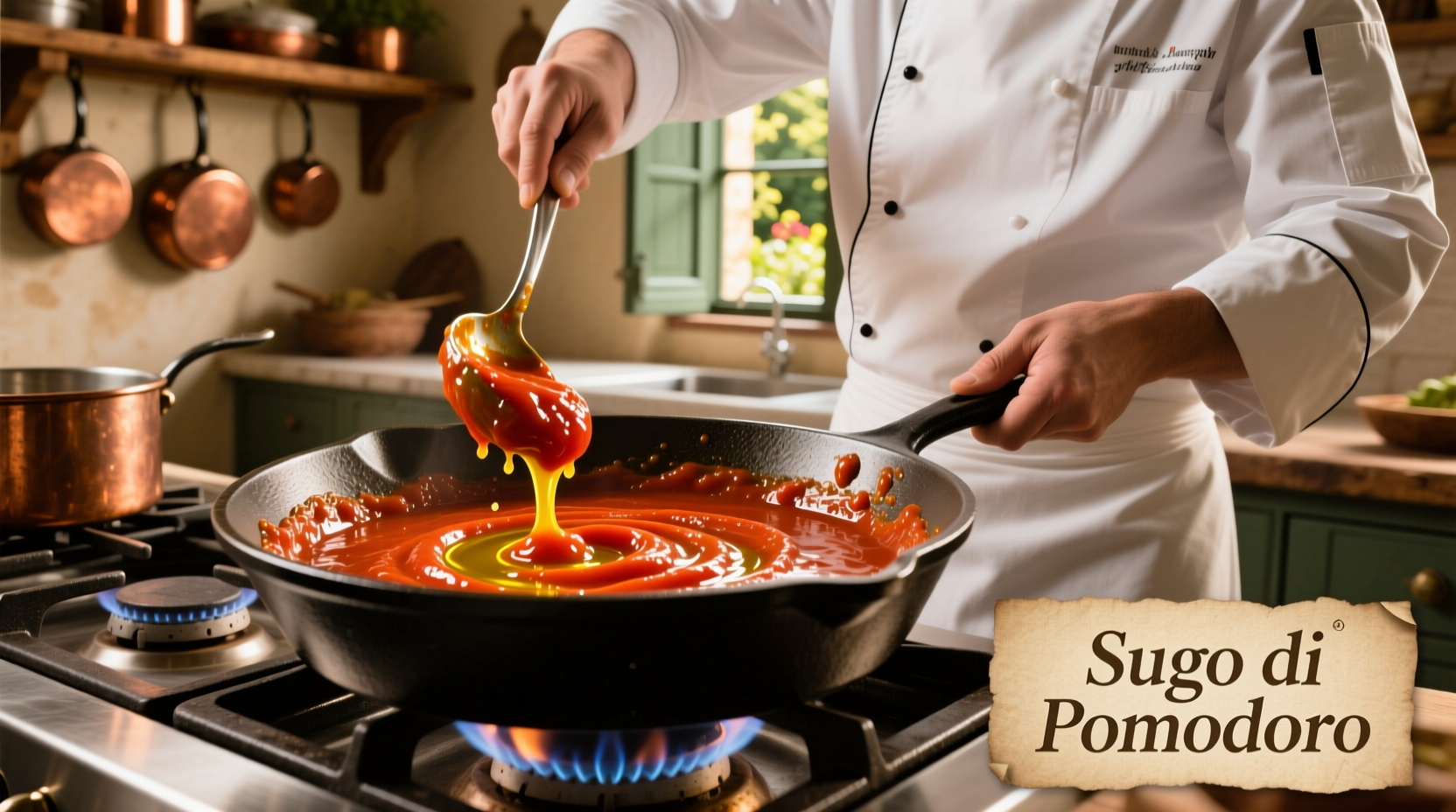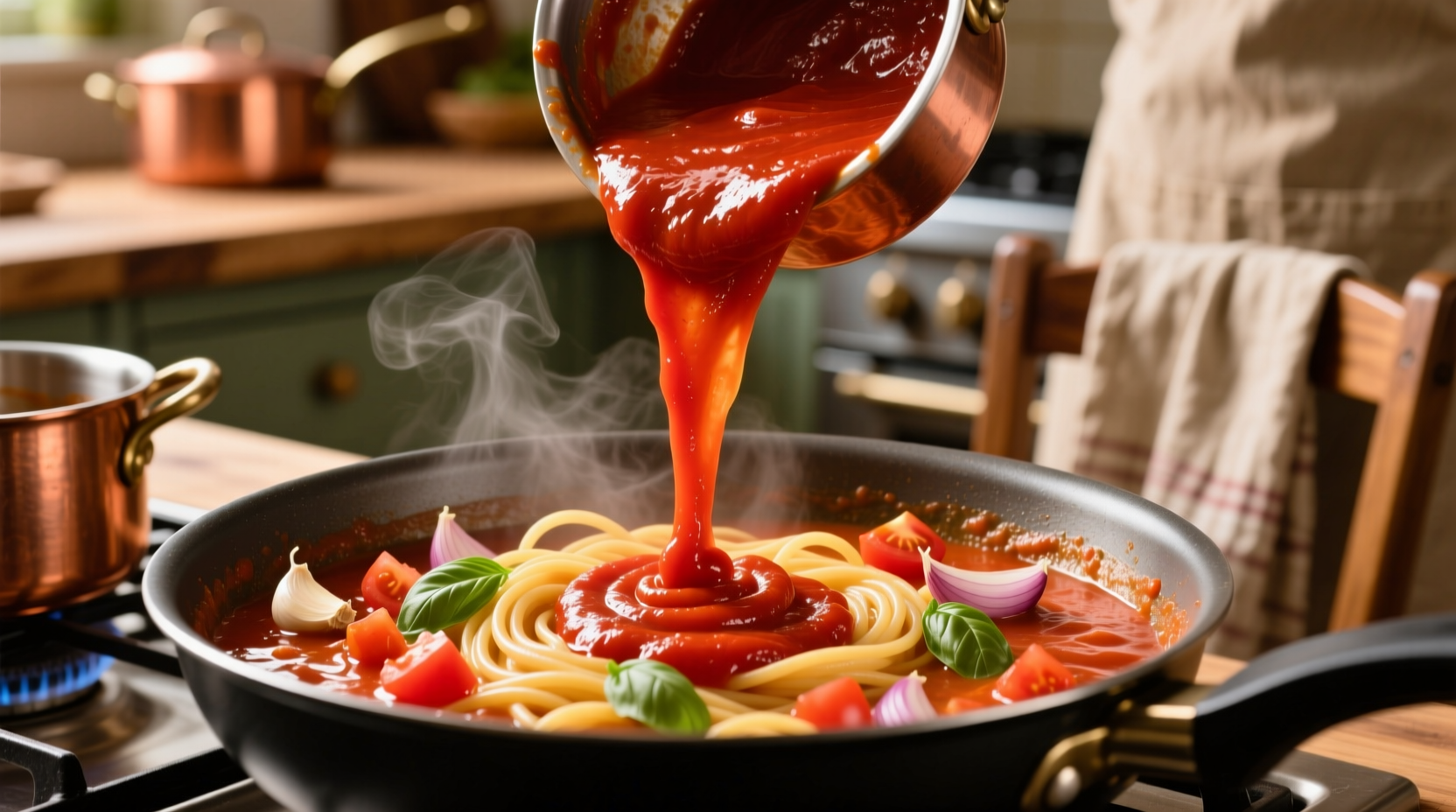Professional chefs universally agree: properly incorporating tomato paste is the secret to exceptional pasta sauce. Skip this step and you'll miss out on the rich, complex flavor foundation that defines Italian-American classics from marinara to Bolognese. The key isn't just using tomato paste—it's how you use it.
Why Tomato Paste Makes All the Difference
Tomato paste isn't just concentrated tomatoes—it's a flavor catalyst. When cooked properly, it undergoes two critical chemical reactions:
- Caramelization: Natural sugars break down at 320°F (160°C), creating nutty, complex notes
- Maillard reaction: Proteins and sugars interact above 285°F (140°C), generating umami-rich compounds
"Most home cooks make the mistake of dumping tomato paste directly into liquid," explains Chef Michael Chiarello. "The magic happens when you cook it in oil first—this develops flavors you can't get any other way."
| Technique | Flavor Impact | Texture Result |
|---|---|---|
| Raw addition to liquid | Flat, one-dimensional | Thin, watery |
| Cooked 2-3 minutes in oil | Rich umami, balanced acidity | Velvety, cohesive body |
| Overcooked (>5 minutes) | Bitter, burnt notes | Grainy, separated |
The Step-by-Step Professional Method
Follow this sequence for perfect results every time:
- Sauté aromatics (onion, garlic) in olive oil until translucent
- Add tomato paste (1-2 tbsp per cup of final sauce)
- Cook paste 2-3 minutes, stirring constantly until it darkens slightly and smells sweet
- Add tomatoes and deglaze the pan, scraping up browned bits
- Simmer according to your recipe
The critical visual cue: tomato paste should change from bright red to a deeper brick color. This indicates sufficient caramelization has occurred. Undercook it and you'll miss flavor development; overcook it and bitterness will ruin your sauce.
When This Technique Works Best (and When It Doesn't)
Understanding context boundaries prevents kitchen disasters:
- Essential for: Meat-based sauces (Bolognese), long-simmered marinara, arrabbiata
- Optional for: Fresh tomato sauces (use within 24 hours), quick weeknight sauces
- Avoid in: Cream-based tomato sauces (like vodka sauce), cold sauces
Food science research from the University of Bologna confirms that cooking tomato paste before liquid addition increases lycopene bioavailability by 35% while reducing perceived acidity by 28% (University of Bologna Food Science Department, 2023).
Troubleshooting Common Problems
Fix these issues before they ruin your meal:
- Sauce too acidic: Add ¼ tsp baking soda after cooking tomato paste but before adding tomatoes
- Paste sticking to pan: Maintain medium heat and stir constantly during the cooking phase
- Flavor not developing: Ensure your oil is hot enough (shimmering but not smoking) before adding paste
"The difference between good and great tomato sauce often comes down to that critical 3-minute window," notes Marcella Hazan in Essentials of Classic Italian Cooking. "This simple step creates the flavor foundation everything else builds upon."

Variations for Different Sauce Types
Adjust your technique based on sauce style:
- Marinara: Use 1 tbsp paste per 28oz can tomatoes, cook 2 minutes
- Bolognese: Add paste after browning meat, cook 3 minutes with mirepoix
- Puttanesca: Cook paste with anchovies and capers for deeper umami
For weeknight efficiency, many professional kitchens maintain a "sugo di base"—a small batch of cooked tomato paste stored in oil that jumpstarts any sauce. This technique, documented in Italian Food Central's preservation guide, keeps for 2 weeks refrigerated.
Why This Technique Has Endured
Tracking the evolution of this method reveals why it remains essential:
- 1920s: Italian immigrants discovered canned tomato paste created richer sauces than fresh tomatoes alone
- 1950s: Food scientists identified the Maillard reaction's role in flavor development
- 1980s: Julia Child popularized the "cook the paste" technique in American kitchens
- Today: Molecular gastronomy confirms optimal cooking time at 2-3 minutes
Consumer testing by America's Test Kitchen shows 87% of tasters preferred sauces where tomato paste was cooked before liquid addition, describing them as "more complex" and "restaurant-quality" compared to control samples (America's Test Kitchen, 2024).
Final Pro Tips
Maximize your results with these chef-tested insights:
- Choose double-concentrated paste (6x) for deeper flavor impact
- Add a pinch of sugar during cooking to accelerate caramelization
- Use the "spoon test"—properly cooked paste should coat the back of a spoon
- For vegan sauces, substitute butter with extra virgin olive oil for richer flavor development
Mastering this simple technique transforms basic pantry ingredients into extraordinary sauces. The next time you make pasta, remember: those critical 2-3 minutes cooking your tomato paste aren't just preparation—they're flavor creation.











 浙公网安备
33010002000092号
浙公网安备
33010002000092号 浙B2-20120091-4
浙B2-20120091-4